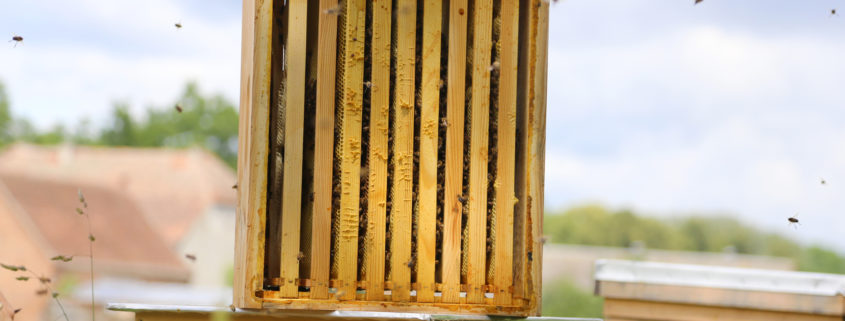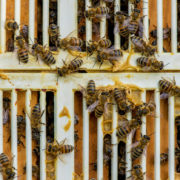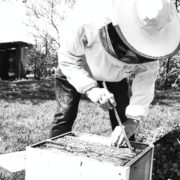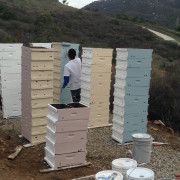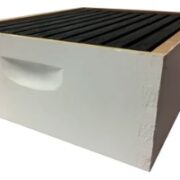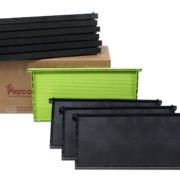How Many Frames Should be in a Langstroth Beehive?
When it comes to the standard beehive, known as the Langstroth beehive, beekeepers have two box sizes available to choose from – an 8-frame and a 10-frame box. The 10-frame is the standard box that most beekeepers use. The 8-frame box has the same function as the 10, but it is narrower, lighter, and easier to handle. This is an excellent option for beekeepers who may struggle to lift a heavy 10-frame beehive when it is full of honey.
This seems straightforward enough, except that many beekeepers – especially commercial beekeepers – use 9 frames. Why is that?
Honey producers sometimes choose to use 9-frames in a 10-frame box to create extra free space for their bees to fill in with more honey. Nine frames, counterintuitively, can often result in a higher honey yield than if the bees worked a box with 10 frames. This is because with 9 frames there is more space per frame to pack in honey. In a good honey flow, the frames in a 9-frame setup become fat and heavy with honey.
Many beekeepers also prefer to use 9-frames because it provides extra room for handling and removing the frames, whereas 10-frame setups can be tightly spaced and sometimes challenging to work with.
While a 9-frame setup has the advantage of maximizing honey production, the extra space between frames, if not evenly distributed, can be a disadvantage. Precise spacing is very important to honeybees. The space that they inhabit between their honeycombs is a universally standardized distance called bee space. Bee space needs to be larger than 4.5mm and less than 9.0mm — no matter what. Honeybees will not tolerate any space outside of this range. If the space between combs is less than 4.5mm the bees will close the gap, usually sealing it with propolis. If the gap is wider than 9mm, the bees will build an additional honeycomb to bring the gap back to the acceptable and precise space that they desire.
Because of how it is designed, a 10-frame box naturally spaces the frames properly. With 9-frames, however, it’s important to consider proper spacing. Beekeepers need to avoid creating large gaps between the frames that are wider than the bee space. Large gaps will cause the bees to build comb between the frames which will create an unnecessary mess. Most beekeeping supply companies sell metal frame spacers that create the perfect size gaps due to the spacing issue that can be caused by using 9-frames. These spacers are made to hold nine frames perfectly within bee space.
So, when would a beekeeper use all 10 frames?
First, when building out a new foundation, nearly all beekeepers will use 10 frames, since frames containing only foundation are particularly thin and ideally fit 10 to a box. Pollinators, bee breeders and many hobbyists also usually utilize all 10 frames. Using 10 frames allows 10% more capacity for brood laying than 9 frames would. At Wildflower Meadows, since we are more focused on queen and bee breeding than honey production, we prefer to use 10 frames per box. This keeps things simple and allows our queens the maximum amount of real estate to lay both worker and drone brood.

